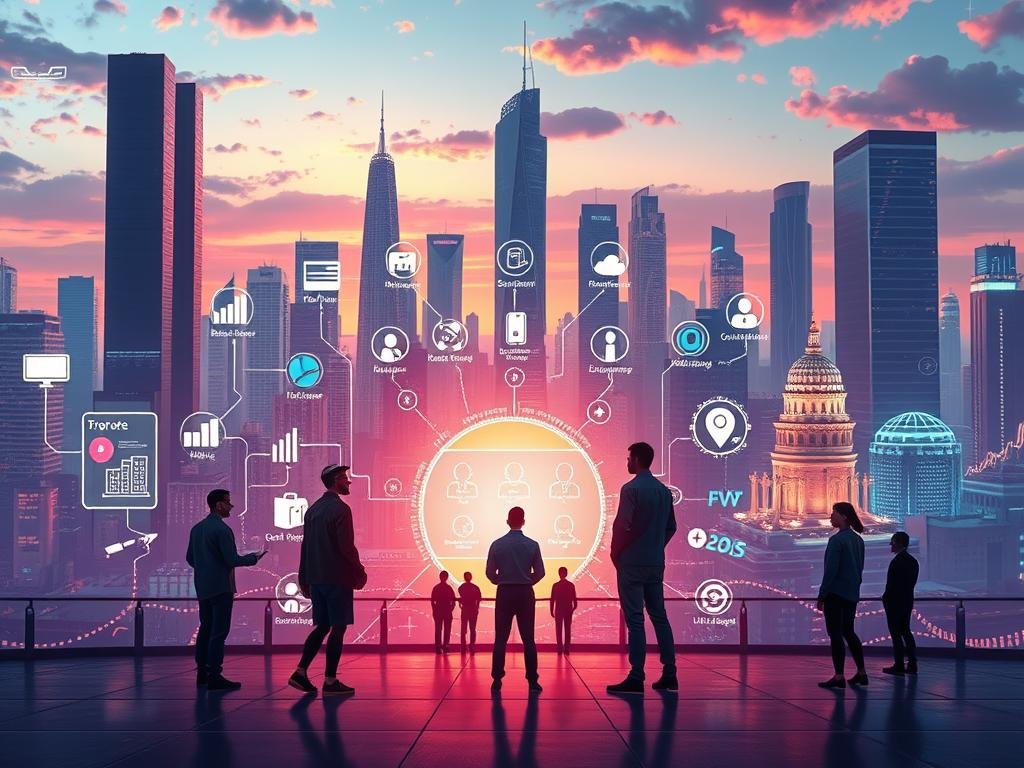The software development landscape is undergoing a seismic shift. We are moving from an era of manual coding and painstaking debugging into a new age of intelligent assistance and accelerated innovation. This transformation is powered by Artificial Intelligence. AI is no longer a futuristic concept or a buzzword confined to research papers; it is a practical, powerful tool that is fundamentally reshaping how we build, test, and deploy software.
This isn’t about machines replacing developers. It’s about augmenting human intelligence, automating the mundane, and unlocking unprecedented levels of productivity and creativity. To ignore this shift is to risk being left behind. Let’s explore how you can unlock the full potential of AI in your software development lifecycle.

From Code Completion to Code Generation: The AI Pair Programmer
The most immediate and visible impact of AI is in the act of writing code itself. AI-powered tools have evolved far beyond simple autocomplete.
- Intelligent Code Suggestions: Tools like GitHub Copilot, Amazon CodeWhisperer, and Tabnine act as real-time pair programmers. They analyze the context of your code—including comments, function names, and existing code structures—to suggest entire lines, blocks, or even complete functions. This dramatically reduces keystrokes, minimizes typos, and introduces developers to new APIs or language features they might not have known.
- From Natural Language to Code: One of the most revolutionary capabilities is the translation of natural language prompts into code. A developer can simply write a comment like
// function to calculate the fibonacci sequenceand the AI will generate the appropriate code. This lowers the barrier to entry for beginners and allows experienced developers to prototype ideas at lightning speed. - Context-Aware Assistance: These models are trained on vast repositories of public code, giving them an incredible understanding of patterns, best practices, and common solutions. They can suggest optimal algorithms, point out potential security flaws, and ensure code consistency across a project.
Click here to develop your intelligent software
Revolutionizing Testing and Debugging
Testing, often a time-consuming and tedious phase, is being completely reinvented by AI.
- Automated Test Case Generation: AI algorithms can automatically generate comprehensive test cases by analyzing the codebase. They can identify edge cases and potential points of failure that a human might miss, leading to more robust and reliable software.
- Predictive Analysis and Root Cause Identification: When a test fails or a bug is reported, AI can help pinpoint the root cause. By analyzing logs, code changes, and historical data, it can suggest the most likely commit that introduced the bug, saving hours of manual debugging.
- Self-Healing Tests: In UI testing, tests often break due to minor changes in selectors (e.g., a changed
divID). AI-powered testing tools can now recognize that a UI element has changed and automatically update the selector to keep the test functional, making test suites far more maintainable.
Enhancing Project Management and Decision-Making
AI’s power extends beyond the code editor into the broader realm of project management and strategic planning.
- Predictive Timelines and Risk Assessment: By analyzing data from past projects—team velocity, issue tracking history, code complexity—AI models can predict more accurate project timelines. They can flag potential risks, bottlenecks, or scope creep before they become critical issues.
- Intelligent Resource Allocation: AI can help managers assign tasks more effectively by matching them with the developers whose skills and historical performance make them the best fit for the job.
- Automated Administrative Tasks: AI can automate large parts of sprint planning, stand-up meeting summaries, and Jira ticket management, freeing up teams to focus on creative work instead of administrative overhead.
Optimizing Operations and Deployment (AIOps)
The role of AI continues after the code is written. It plays a critical role in maintaining and monitoring applications in production.
- Anomaly Detection: AI systems can monitor application performance, infrastructure metrics, and log files in real-time. They learn “normal” behavior and can instantly detect and alert on anomalies, often identifying outages before users are affected.
- Intelligent Alerting: Instead of alert fatigue from thousands of noisy alerts, AI can correlate events, suppress duplicates, and only surface the root-cause alerts that truly require human intervention.
- Root Cause Analysis: In the event of an incident, AI can sift through terabytes of operational data to quickly identify the underlying cause, drastically reducing Mean Time to Resolution (MTTR).

The Future: AI-Driven Development
We are rapidly approaching a future where the very nature of development will change.
- AI-Native Design: Developers will describe a system’s requirements and constraints in natural language, and AI will help architect the entire solution, suggesting optimal technologies, patterns, and infrastructure.
- Personalized Learning and Upskilling: AI will act as a personal tutor for developers, identifying knowledge gaps based on their code and recommending tailored learning resources to help them grow.
- Hyper-Automation: The entire software development lifecycle—from requirement gathering to deployment and monitoring—will be seamlessly integrated and assisted by AI, creating a continuous, optimized flow of value.
Click here to develop your intelligent software
How to Start Your AI-Powered Development Journey
Unlocking this power requires a strategic approach:
- Start Small: Begin by integrating an AI code completion tool into your IDE. Let your team get comfortable with the concept.
- Upskill Your Team: Encourage developers to learn “prompt engineering”—the skill of crafting effective instructions for AI tools to get the best results.
- Evaluate and Integrate: Explore AI tools for testing (e.g., Applitools, Testim), security (Snyk, Checkmarx), and operations (Datadog, Dynatrace). Integrate them into your CI/CD pipeline.
- Focus on Ethics and Security: Be aware of the risks. Establish guidelines for using AI-generated code, including auditing for licensing, security vulnerabilities, and bias. Never input sensitive or proprietary code into public AI models.
- Cultivate a Culture of Collaboration: Foster an environment where AI is seen as a collaborator, not a competitor. The goal is to amplify human creativity, not replace it.

Conclusion: The Synergy of Human and Machine
Click here to develop your intelligent software
The power of AI in software development is not in automating developers away but in empowering them to achieve more. It handles the repetitive, the mundane, and the tedious, freeing up the human mind for what it does best: creative problem-solving, strategic thinking, and innovation.
The future of software development belongs to those who embrace this synergy. By unlocking the power of AI, we aren’t just writing code faster; we are building better, more secure, and more incredible software than ever before. The tools are here. The time to start is now.



